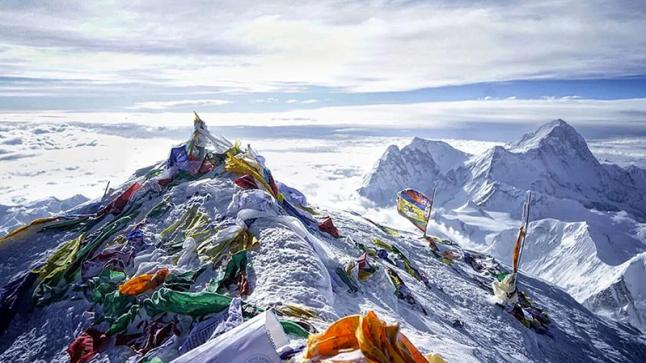Pictures: Everest from the highest peak in the world to the largest garbage dump

Decades of commercial mountain climbing have transformed Mount Everest into the world’s highest garbage dump. What is being done to curb waste on Mount Everest?
A shocking map revealed the enormous volume of remaining garbage on the mountain, with experts warning that Mount Everest is threatened by unsustainable levels of waste.
At an astonishing height of 29,029 feet (8,848 meters), climbing Mount Everest is one of the greatest challenges on Earth. But climbers now pose an even greater challenge to those who have to clean up after them; Mount Everest faces the danger of becoming the highest garbage dump in the world.
Experts estimate that there may be up to 50 tons of remaining garbage on the mountain, while Everest Base Camp produces 75 tons of waste each season. With the increasing number of climbers on the mountain – with at least 600 people climbing the world’s highest peak so far this year alone – the waste disposal problem has worsened.
The waste problem has now become so severe that climbers are being forced to carry their feces down the mountain. The worst waste was found at Camp Two, located at an altitude of 21,000 feet (6,400 meters) above sea level.
Five years ago, Nepal allocated $4,000 (£3,000) as a garbage deposit for each team, which would be refunded if each climber dropped at least eight kilograms (18 pounds) of waste. On the Tibetan side of the Himalayas, they are required to reduce the same amount and are fined $100 (£75) per kilogram if they fail to do so.
In 2017, climbers in Nepal dropped nearly 25 tons of garbage and 15 tons of human waste – equivalent to three double-decker buses – according to the Sagarmatha Pollution Control Committee (SPCC). The British newspaper “Daily Mail” quoted the SPCC committee as saying that more was carried down this season, but this is just a small part of the garbage disposed of every year, as only half of climbers bother to haul the required amounts.
Instead, many climbers choose to forgo the deposit, a drop in the ocean compared to the $20,000 (£15,000) – $100,000 (£75,000) they will pay for this experience.
Ang Tshering Sherpa, the former president of the Nepal Mountaineering Association, believes another solution would be a specialized garbage collection team.












